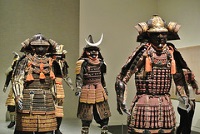
Featuring a comprehensive collection of 7,000 artworks and artefacts from civilisations around the world, the Barbier-Mueller Museum in Geneva is the outcome of the tireless accumulations of Josef Mueller, whose collection began in 1907 and is continued to this day by his heirs. Founded in 1977, the museum wanted to preserve and study the sculptures, fabrics and ornaments brought from "primitive" civilisations that were once isolated communities. Visitors should look out for the megalithic monuments from Indonesia, the statues and items of worship from Oceania, pre-Columbian art from the Americas and ancient masks and shields from Africa.
Address : 10 Rue Jean-Calvin
Website : www.barbier-mueller.ch
Telephone : +41 22 312 0270
Transport : By bus: 2, 3, 6, 7, 10, 12 (Molard stop) and 36 (Hôtel de Ville stop)
Opening times : 11am to 5pm
Admission : CHF 8 adults, free for children under 12, other concessions available.
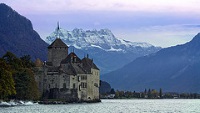
One of the best-maintained medieval castles in Europe, the 13th-century Château de Chillon is the most visited historical building in Switzerland. With its stunning lakeside location near the chic town of Montreux, jutting out into the water and framed by mountains, it is one of the most photographed castles in Europe. An important fortress in the Middle Ages, it was positioned to control the narrow passage between mountains and lake, protecting the major north-south route. It was also the favourite summer residence of the Counts of Savoy; while later, it served as a state prison. Visitors can tour the dungeons where the castle's most famous prisoner was chained for four years, the priest François Bonivard: a supporter of the Reformation. The fortress became famous when Lord Byron wrote about Bonivard's fate in an inspired poem entitled Prisoner of Chillon. Besides the dungeons, visitors can wander round the towers and courtyards, discover narrow secret passages, and see the grand knight's halls, frescoed chapel, luxurious bedchambers and rooms containing medieval weapons, furniture and paintings.
Address : Avenue de Chillon 21
Website : www.chillon.ch
Telephone : +41 21 966 8910
Transport : By car, train (Veytaux) or bus (line 201 from Vevey, Montreux and Villeneuve).
Opening times : April to September, 9am-7pm (last entry at 6pm); October, 9:30am-6pm (last entry at 5pm); November to February, 10am-5pm (last entry at 4pm); March, 9:30-6pm (last entry at 5pm)
Admission : CHF 12.50 adults, CHF 6 for children ages 6-15 years, other concessions available
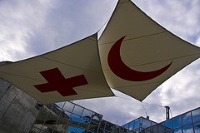
One of the most creative and thought-provoking museums in Europe, the International Red Cross and Red Crescent Museum brings together sculpture, installation, photography and film to highlight the importance of human rights, the history of conflict in the 20th century and the humanitarian work the Red Cross has done in providing aid to combatants and civilians caught up in both war and natural disasters. Funded entirely by outside donors, the museum is appropriately situated on the hillside opposite the United Nations, within the headquarters of the International Committee of the Red Cross. A significant stopover on a visit to Geneva, the International Red Cross and Red Crescent Museum provides insight into the gross implications of war and the tragedy that surrounds, as well as the committed work of the volunteers and Red Cross representatives alike. All the exhibits have an English language option.
Address : 17 Avenue de la Paix
Website : http://www.redcrossmuseum.ch/en/
Telephone : +41 22 748 9511
Opening times : 10am-6pm (April to October), 10am-5pm (November to March)
Admission : CHF 15
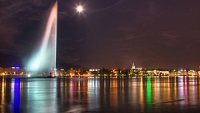
One of the tallest fountains in the world, the Jet d'Eau is a Geneva attraction that cannot be missed. Projecting 460 feet (140m) into the air at a speed of 124 miles per hour (200km/h) and pumping 132 gallons (500 litres) of water per second, the fountain was initially established to release pressure for hydropower generation on the Rhone River, but was so loved by the populace that in 1891 the city created a permanent fountain. As Paris has the Eiffel Tower and New York has the Empire State Building, Geneva has the Jet d'Eau. For a breathtaking and romantic sight, tourists should visit at night, when the fountain is lit up.
Address : Quai Gustav-Ador
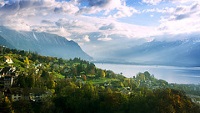
One of the largest lakes in central Europe and shared by both Switzerland and France, Lake Geneva (Lac Léman to its French-speaking inhabitants) has for decades drawn visitors to its shores. Attracted by the alpine panorama, quaint wooden chalet villages, vineyard-covered slopes and sailboats skimming across the blue waters, many famous writers, musical composers, actors and poets came to settle and the area has become something of an inspiration to the arts. Situated in the westernmost district of Vaud, the region contains a diversity of attractions and activities, from wine-growing villages and mountain ski resorts, picturesque castles, and magnificent cathedrals, to low-key lakeside resorts, boat cruises, and cosy fireside pots of fondue. Sophisticated shopping and cultural life can be found in the cities of Geneva and Lausanne, with sweeping views across the sparkling lake to the Alps and the distinctive pinnacle of Mont Blanc. Among the vineyards and affluent villas clinging to the slopes lie the lakeside towns of Vevey and Montreux, the pearls of the Swiss Riviera.Scenic winding roads stretch along the shores, and train trips offer outstanding views, while below steamers crisscross the waters of Lake Geneva, offering a variety of ways to experience the splendour of its location.
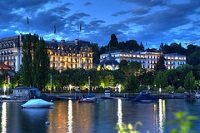
Located on the shores of Lake Geneva, the energetic city of Lausanne is built above the lake on a sequence of tiers connected by a small metro. The upper or Old Town contains the grand Gothic cathedral, Notre-Dame; its turreted towers a well-known symbol of the city. The lower town on the lakeshore was once the small fishing village of Ouchy and is now the prime waterfront area with outdoor dining and cafés, promenades and sporting activities. The gardens around the Quay d'Ouchy are home to the city's foremost attraction, the Olympic Museum, containing a wealth of sporting memories and a collection of unique objects pertaining to the Olympic Games from its beginning until the present. Lausanne relishes its importance as the Olympic World Capital and headquarters of the International Olympic Committee.
Website : www.lausanne-tourisme.ch
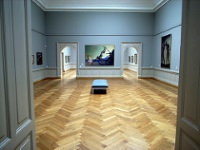
Comprising three sections, the captivating Museum of Art and History explores the passage of western culture and international civilisations with over 7,000 pieces covering archaeology (Roman, Greek, Egyptian and Etruscan), fine arts (paintings from the Renaissance to modern times) and applied arts (found objects from the Middle Ages to the 20th century). One of Geneva's largest museums, the colossal Museum of Art and History was built at the beginning of the 20th century, between 1903 and 1910. When visiting, travellers should look out for paintings by legendary artists Van Gogh and Renoir.
Address : Rue Charles-Galland 2
Website : institutions.ville-geneve.ch/fr/mah/
Telephone : +41 22 418 26 00
Opening times : 11am-6pm, closed on Monday.
Admission : Permanent exhibitions are free of charge.
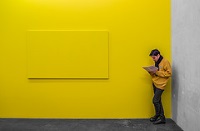
Opened in 1994, the cutting edge Museum of Modern and Contemporary Art refuses to conform and as former museum director Christian Bernard says, the museum 'is not here to present the acceptable face of contemporary art'. With modern works dating from the 1960s to the present day, exhibited in a turn of the century factory, visitors to MAMCO will spend hours marvelling at the range of contemporary art that covers three floors. The Museum of Modern and Contemporary Art constantly reinvents itself, changing its exhibits and interior construction three times a year. The works of famous Dadaist Marcel Duchamp are on display all year round.
Address : 10 rue des Vieux-Grenadiers
Website : www.mamco.ch
Telephone : +41 22 320 61 22
Transport : By tram (lines 12 and 15, stop at Plainpalais) and by bus (lines 2 and 19, stop Musée d’ethnographie; line 1, stop at École de médecine)
Opening times : Tuesday to Friday 12pm-6pm; Saturday and Sunday 11am-6pm.
Admission : CHF 15, concessions available
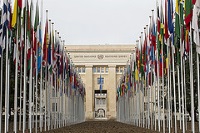
Built between 1929 and 1937 to host the League of Nations, the Palais des Nations now houses the United Nations Office at Geneva, which was inaugurated in 1966 after the dissolution of the League of Nations. The biggest United Nations station outside of the headquarters in New York, the office at Geneva provides critical support to the organization. Situated in 45-hectare Ariana Park, the extensive Palais des Nations is bordered by century old trees, and it is not uncommon to see peacocks darting around; the result of a request by the former owner of the land who bequeathed it to the City of Geneva on condition that peacocks may run freely on its grounds. Tours include the council room with frescoes by José Maria Sert and the Assembly Hall. Identity documents are required.
Address : Pregny Gate, 14 avenue de la Paix
Website : www.unog.ch
Telephone : +41 22 917 12 34
Transport : By bus (lines 8, 28, F, V and Z stop at "Appia"; lines 5 and 11 stop at "Nations") and by tram (Tramway 15 Terminus "Nations").
Opening times : Monday to Friday (September to March); Monday to Saturday (April to August). Guided tours take place at 10:30am, 12pm, 2:30pm and 4pm, subject to availability.
Admission : CHF 15, concessions available.
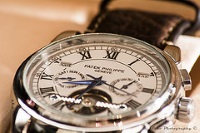
The museum offers a fascinating presentation of Genevese, Swiss and European watches and enamels dating from the 16th to the early 19th century, including a great number of masterpieces that have left their mark on the history of horology. Audiovisual multilingual presentations of selected masterpieces animate the exhibit. Visitors can explore the roots of time-measurement through a visual timeline, which details the key events in watchmaking's evolution from the Antique creations of the 1500s, through to the founding of Patek Philippe in 1839, up to the present day. The intricate details and designs, moving parts and beautiful colours of the collection will provide hours of fascination.
Address : Rue des Vieux-Grenadiers 7
Website : www.patekmuseum.com
Telephone : +41 22 707 30 10
Transport : By bus ( line 1, stop at Ecole-de-Médecine) and by tram (line 12 and 15, stop at Plainpalais).
Opening times : Tuesday to Friday 2pm-6pm; Saturday 10am-6pm.
Admission : CHF 10, concessions available.

The cultural hub of Geneva, Place Neuve sits just outside the former ramparts and is a great access point for the Old Town, which lies on the other side of the high retaining walls. Home to three of Geneva's regal performance and exhibition halls, the Grand Theatre (opera house), Conservatory of Music and Rath Museum, the Place Neuve is worth visiting to witness the architectural aesthetic of these buildings. In the centre of the square is the emblematic statue of Swiss general Henri Dufour, who was the first person to establish a map of Switzerland and also presided over the First Geneva Convention. The highest mountain in Switzerland, Dufourspitze, is named after him.
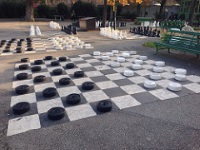
Public parks cover over one quarter of Geneva providing the populace with a quiet haven of rolling lawns and tree lined walkways. Dotted with many curious sculptures and attractions, there are a few parks worthwhile visiting. Bastion Park houses the 328-foot (100m) Reformation Wall, a monument commemorating the major figures and events of the Protestant Reformation, as well as life size chess boards at the north end of the park.To view the famous flower clock, a symbol of the Swiss watch industry, head to the English Garden close to the water fountain and for outstanding views of Mont Blanc and the lake, Park Moynier is a firm favourite, with the History of Science Museum situated in the centre. Twenty hectares of woodland and hiking trails is what you will find at Batie Woods on the outskirts of the city.
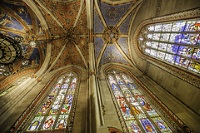
With initial construction commencing in 1160 and lasting nearly a century, St Peter's Cathedral has over the years become a hotchpotch of architectural styles with Romanesque, Gothic and Neoclassical features. A former Catholic cathedral, St Peter's became a Protestant church in 1536 at the advent of the Reformation and was cleared of its ornate fittings such as altars, statues, paintings and furniture, but the stained-glass windows remained. Prominent theologian John Calvin preached at St Peter's Church between 1536 and his death in 1564 and the church soon became the centre of Protestantism. Recently, the remains of a fourth-century church were discovered under the existing building, providing an insightful look into early Christianity. Some of it is open to the public and can be viewed through the small museum on the site. For a breathtaking panoramic view of Geneva and Lac Leman, visitors can climb the 157 steps that lead to the summit of the cathedral's north tower.
Address : 24 Place du Bourg-de-Four
Website : www.saintpierre-geneve.ch
Opening times : Monday to Saturday 10am-5:30pm; Sunday 12am-5:30pm (October to May) and Monday to Saturday 9am-6:30pm; Sunday 12am-6:30pm (June to April)
Admission : Towers: CHF 5 for adults, CHF 2 for children and archeological site: CHF 8.

Travel Guide powered by Word Travels, copyright © 2023 Globe Media Ltd. By its very nature information in this travel guide is subject to change at short notice and travellers are urged to verify information on which they're relying with the relevant authorities. Neither Globe Media Ltd nor Travel Vogue can accept any responsibility for any loss or inconvenience to any person as a result of information contained above.